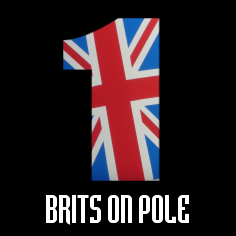Night owls who are also motorsport fans have been treated to an affectionate hour-long portrait of a British racing legend this week. Graham Hill: Driven was broadcast on BBC4 on Tuesday night, but you can still catch it for a few more days at http://www.bbc.co.uk/iplayer. Coming as it does straight after the 2008 Monaco Grand Prix, a race which Hill made his own, it’s very difficult not to draw comparisons between the sport then and now.
On the surface Graham Hill personifies everything that Formula One is no longer. His anecdote told to Michael Parkinson of entering his first race with little idea what was happening, only to find himself most unexpectedly in the lead, appears early on in the film. Hill explains to a laughing Parky how he might occasionally have to get away a bit abruptly from a traffic light after cutting up another motorist. His feats of gamesmanship are referred to — the ones that saw him catching the eyes of competitors on the grid, glancing at their tyres and shaking his head knowingly before roaring away. There are pictures of him blowing kisses to cameramen, and winking.
Contrast this urbane, self-deprecating and above all grown-up chap with the focused, steely-eyed young men whose parents are also their managers and who have been karting since they were at primary school; who are media-trained in their teens and who must often raise hundreds of thousands of pounds in sponsorship before they can even sit in a decent car. They are taken on by teams that have become corporations and see unsatisfactory race performances as damaging to their brands. And they are treated as more or less disposable — the moment things start to go wrong they are out of the car, no second chances. Or their shot at driving at the sport’s pinnacle might come to an end through back-room politics or the whim of some sponsor who wants their own man in the car.
Could this really be the same sport that is pictured in the documentary through sunlit shots of Hill with Jackie Stewart and Jim Clark partying, picnicking, kissing girls and relaxing aboard yachts in bathing costumes?
And yet, how much of Hill’s golden era of racing was genuine, and how much part of the myth that he helped create? Comparisons to Terry-Thomas and Dick Dastardly abound. The biggest sin, worse than losing almost, is to be seen to take yourself too seriously or to try too hard. Well, tell that to Fernando Alonso or Kimi Raikkonen. And yet we hear how all this was an act, and how single-minded Hill really was in pursuit of his first drive, repairing cars for a go behind the wheel and negotiating a job from Colin Chapman at Lotus after hitching a lift back from a race.
We hear from the mechanics, who put in the hard work behind the scenes, and who felt the rough edge of Hill’s tongue when things didn’t go as they should. And the team rivalry between Hill and Clark, or Hill and Stewart, which was nonetheless suspended after the Scot was discovered by his team-mate crashed in a ditch, trapped in his car and up to his waist in high-octane aviation fuel that was in the process of burning his skin away.
In this important sense things have got visibly more serious, and rightly so. Here we see Hill, head and shoulders proudly clear of the car, bouncing along on a roughly-surfaced circuit which peters off into mud rather than into run-off areas and tyre walls. He’s wearing a pair of goggles and a helmet that a modern cyclist would probably sneer at. Or Monaco, Hill’s favourite stomping ground, with absolutely nothing between the drivers and the harbour. Today we have monocoque survival cells, crash protection zones, the head and neck support system and lightweight yet practically indestructible helmets. And Heikki Kovalainen crashes at nearly 200 miles per hour and gets off with little more than a headache, as well as being fit for the next race two weeks later. Sir Jackie’s awful reminiscences of friends and colleagues burned and dismembered in crashes are not something the sport will ever return to, thank God.
But, despite the differences between the Hill era and modern-day racing, perhaps not everything is unrecognisable. Perhaps it still attracts the same risk-takers, perfectionists and individualists. Hence the tragic recent death of Colin McRae at the controls of his Squirrel helicopter, so reminiscent of that of Hill in his Piper Aztec. We are introduced to the film with this quote of Hill’s: “Time is of the essence — and I’m very short of essence.” Well, it’s clear that he did manage to donate a little of that essence to the future of the sport.
